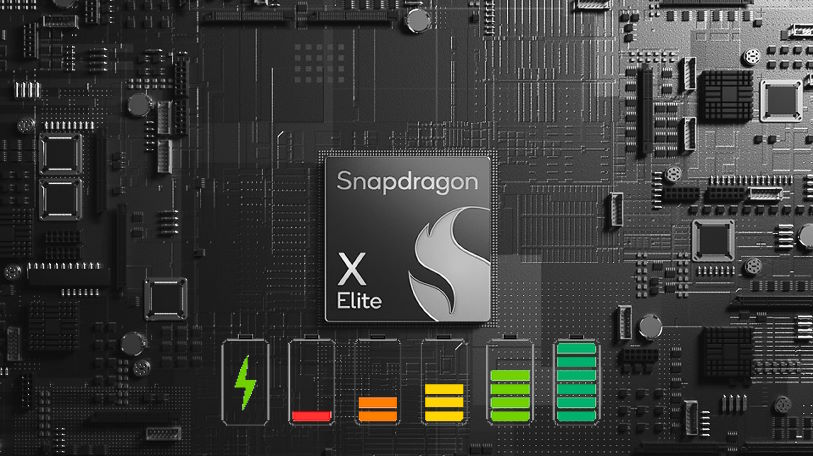Qualcomm Snapdragon X: Better for the battery?
- June 26, 2024
- 0
The ARM architecture has a reputation for being more efficient and economical than x86 and has therefore caused a stir in smartphones. Do you enjoy the same efficiency
The ARM architecture has a reputation for being more efficient and economical than x86 and has therefore caused a stir in smartphones. Do you enjoy the same efficiency

The ARM architecture has a reputation for being more efficient and economical than x86 and has therefore caused a stir in smartphones. Do you enjoy the same efficiency with the oversized Qualcomm Snapdragon X Elite and Plus or do laptops with a classic processor have the advantage here?
When you say ARM, you say economical. Architecture gained importance with the advent of tablets and smartphones. Such devices are usually not connected to the power grid, so autonomy is important. Intel looked for an answer with Atom processors, but found none. ARM chips like Qualcomm’s Snapdragon 800 series and MediaTek’s CPUs became the norm.
Today, the Qualcomm Snapdragon X-series finally puts an ARM chip under the hood of a Windows laptop that can compete with the best from Intel and AMD. We previously examined the performance of the Snapdragon X Elite and Plus and found that the processor is undoubtedly a powerhouse.
Thanks to the powerful Oryon cores on the chip, Qualcomm was able to transform the ARM architecture into an alternative to x86. Powerful, which usually also means less economical. To become truly relevant in the laptop world, it is not enough for ARM to work as well as x86: ARM chips have to be outstanding. If Qualcomm can offer better performance than Intel or AMD in Windows laptops and also enable longer battery life, the chip designer has struck gold.
We examine the impact of the Qualcomm Snapdragon X Elite and Snapdragon X Plus using two Microsoft Surface Laptop 7 devices. We compare them to more traditional laptops with AMD or Intel on board.
For our first test, we’ll use the testing method we’ve used for years in our laptop reviews. We set the laptops up identically (for example, in terms of screen brightness and performance mode) and run a series of tests that simulate light and not-so-light office work, including photo editing and video calling.
Test suite 1 covers the slightly heavier work, test suite 2 goes easy on the battery. In both cases, the results are clear. The Surface Laptop 7 outperforms the alternatives. They either have the same screen size and a similar battery, or a larger screen offset by a larger battery.
So it seems that the Qualcomm Snapdragon X chips both run very efficiently. In the slightly more demanding test, we see an autonomy of fourteen to almost fifteen hours. That’s hours more than we’re used to even from the best classic Windows laptops, and almost enough to get through two days of work.
It is noticeable that the Qualcomm Snapdragon X Plus is more economical than the X Elite. This makes sense: The chip has ten instead of twelve Oryon cores and cannot boost. This gives you about half an hour of additional battery life.
The result is even more impressive when you consider that our classic tests do not run natively on ARM. In other words, the results are preserved even when the software is run via the Prism emulation layer.
This emulation layer makes a difference. Below we compare two tests: the old PC Mark 8 battery test, which runs in no way optimized, and the Procyon Battery Life test, which works via the native Office installation on the laptop.
The PC Mark 8 test is demanding and does not provide any information about the overall battery life, but it is a useful comparison tool. We pitted the Surface Laptop 7 against an Asus Expertbook B3 with a frugal Intel Core Ultra 5. The Core Ultra 5 performs very well in non-optimized workloads. The laptop with the Intel chip lasts half an hour longer than the Surface Laptop 7 with the Qualcomm Snapdragon X Elite.
The situation changes completely when we analyze the Procyon test. Remember: it runs the natively optimized version of Office for x86 or ARM. Emulation or compatibility issues are no excuse for either laptop.
The devices with Qualcomm Snapdragon X perform excellently. Here, in a test that alternates between Word, PowerPoint and extensive spreadsheets, we measured an autonomy of around 23 hours. Thanks to the optimization of Office for ARM, ARM laptops are in a class of their own. They last five hours longer than the Asus Expertbook B3, which has fantastic endurance by Windows standards.
Based on our tests with the Microsoft Surface Laptop 7, we notice that both the Qualcomm Snapdragon The devices have unparalleled endurance. In years of laptop testing, we have never come across another device that lasts as long.
Remarkably, Qualcomm achieves this result with a relatively classic chip design. The Snapdragon X series has only ten to twelve Oryon processing cores, without special efficiency cores in a Big.Little configuration.
The benefits of native ARM workloads are clear. The older the software you want to run, the less the ARM chip’s advantage diminishes, until it eventually disappears altogether. This result is somewhat consistent with our previous performance test, where the Snapdragon chips also dominate when running new software, but are a little less convincing when it comes to intensive emulation.
In any case, these results are also promising. An economical chip with strong performance: That sounds ideal for an office laptop.
Source: IT Daily
As an experienced journalist and author, Mary has been reporting on the latest news and trends for over 5 years. With a passion for uncovering the stories behind the headlines, Mary has earned a reputation as a trusted voice in the world of journalism. Her writing style is insightful, engaging and thought-provoking, as she takes a deep dive into the most pressing issues of our time.